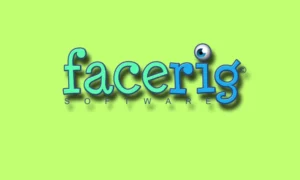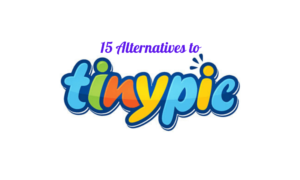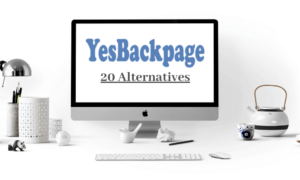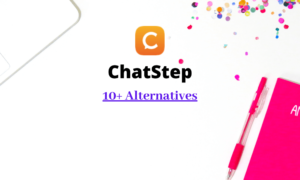Illustrations are powerful visual assets that can enhance various projects, presentations, or creative endeavors. Non-designers can leverage the benefits of illustrations to elevate their work, even without formal design skills. With the availability of free illustrations online, non-designers have access to a vast collection of high-quality visuals that can bring their ideas to life. Here are some valuable tips for non-designers on effectively using free illustrations.
Utilizing Reliable Sources for Free Illustrations
Explore reputable websites that curate high-quality collections of free illustrations. Websites like Unsplash, Pixabay, Freepik, and Ouch! offer extensive libraries of illustrations that can be used for personal or commercial projects. These platforms provide diverse styles and themes, ensuring you can find illustrations that match your project’s requirements.
When seeking free illustrations, it’s essential to rely on trustworthy sources. Consider the following aspects:
1. Licensing and Usage Rights
Ensure that the free illustrations you choose come with the appropriate licensing and usage rights. Check the licensing terms specified by the source to understand how you can use the illustrations and if any attribution is required.
By adhering to licensing agreements, you can use the illustrations legally and avoid any copyright issues. It’s also important to verify the usage rights for commercial projects, as some illustrations may have limitations in that regard.
Related: 7 Ways to Create Vector Graphics and Illustrations
2. Matching the Style with Your Project
Selecting illustrations that align with your project’s theme and tone is crucial for visual coherence. Consider the following factors:
3. Consider the Project Theme and Tone
Think about the overall theme and tone of your project. Are you aiming for a playful and vibrant atmosphere or a more sophisticated and professional look? Choose free illustrations that reflect the desired mood and align with your project’s message.
For example, if you’re creating a children’s book, illustrations with bright colors and whimsical characters would be appropriate. On the other hand, if you’re designing a business presentation, illustrations with clean lines and a modern aesthetic would be more fitting.
4. Coherence and Consistency
Maintain visual coherence by selecting illustrations that share a consistent style and aesthetic. This consistency helps create a unified and professional appearance. Look for illustrations that have similar colors, line styles, or visual elements.
This harmony ensures that the illustrations work together seamlessly within your project. Consistency is especially important when using multiple illustrations throughout your work, such as in a presentation or a series of marketing materials.
Also Read: Top 10 Free Image Generation APIs
5. Applying Proper Placement and Sizing
Effectively placing and sizing free illustrations can significantly enhance their impact and integration within your project. Consider the following guidelines:
6. Integration with Text and Content
Integrate the free illustrations with your project’s text and content in a way that enhances the overall message. Ensure that the illustrations complement the written content and help convey the intended information.
Position the illustrations strategically to guide the viewer’s attention and support the flow of the project. For example, if you’re designing a brochure, place the illustrations near relevant text sections to illustrate key points or add visual interest.
7. Balance and Hierarchy
Maintain a sense of balance and hierarchy when incorporating free illustrations. Consider the visual weight of the illustrations and how they interact with other elements on the page. Ensure that the illustrations do not overpower the main message or make the project appear cluttered.
Establish a clear hierarchy where the illustrations enhance the content without dominating the overall design. This can be achieved by adjusting the size, placement, and prominence of the illustrations based on their importance in relation to the surrounding elements.
Customizing and Personalizing Free Illustrations
While free illustrations provide a convenient starting point, you can personalize them to align with your brand or project. Consider the following customization options:
1. Adding Brand Elements
Add your brand’s logo, colors, or typography elements to the free illustrations to make them more aligned with your brand identity. This customization helps create a consistent and recognizable visual presence. For example, overlay your logo on the illustration or incorporate your brand colors into the color scheme of the illustration.
2. Adjusting Colors and Details
If the free illustrations do not perfectly match your project’s color scheme or desired style, consider adjusting the colors or details using graphic editing software. Make sure to preserve the original integrity of the illustration while tailoring it to your specific needs.
Adjusting the colors can help create a cohesive visual experience while tweaking certain details can make the illustration more closely aligned with your project’s requirements.
Related: 8 Getty Images Alternatives
Conclusion
Free illustrations provide non-designers with valuable resources to enhance their projects visually. By utilizing reliable sources, matching the style with their projects, applying proper placement and sizing, and customizing the illustrations, non-designers can create compelling visuals that captivate their audience.
Free illustrations empower non-designers to add professional-level visuals to their work, enabling them to effectively communicate their ideas and messages. With these tips, non-designers can leverage the power of free illustrations to create visually engaging and impactful projects.





















